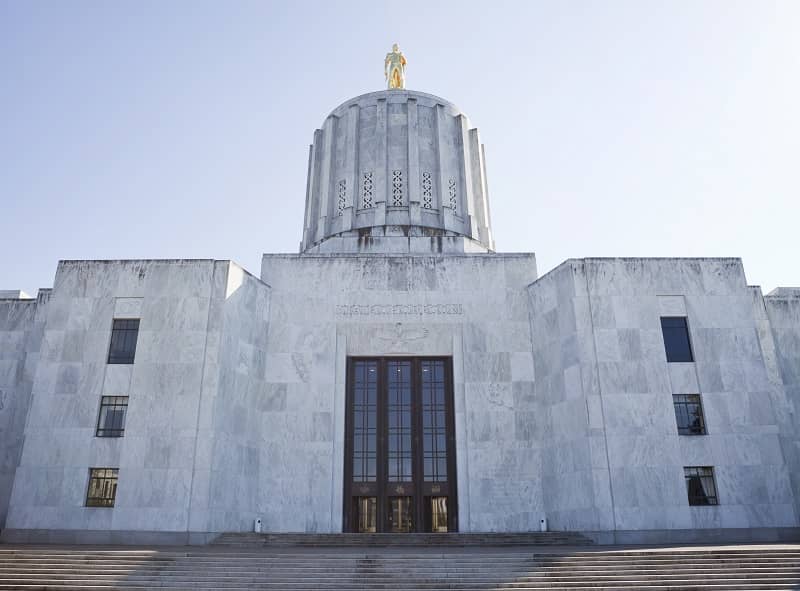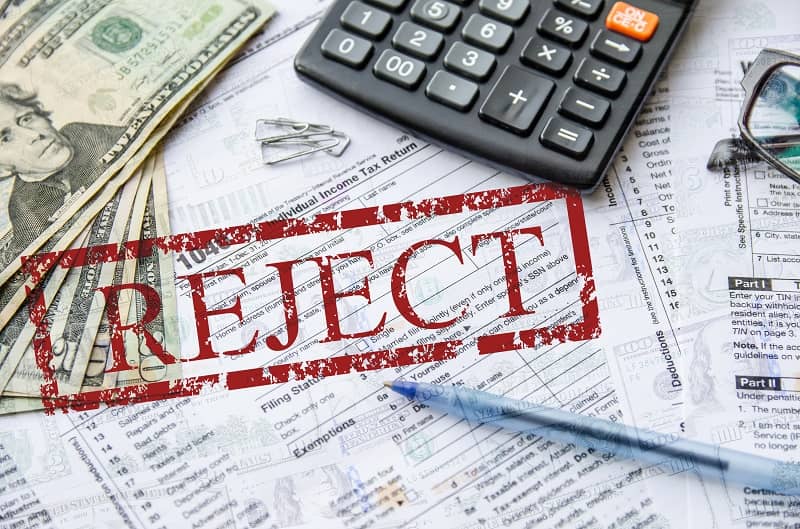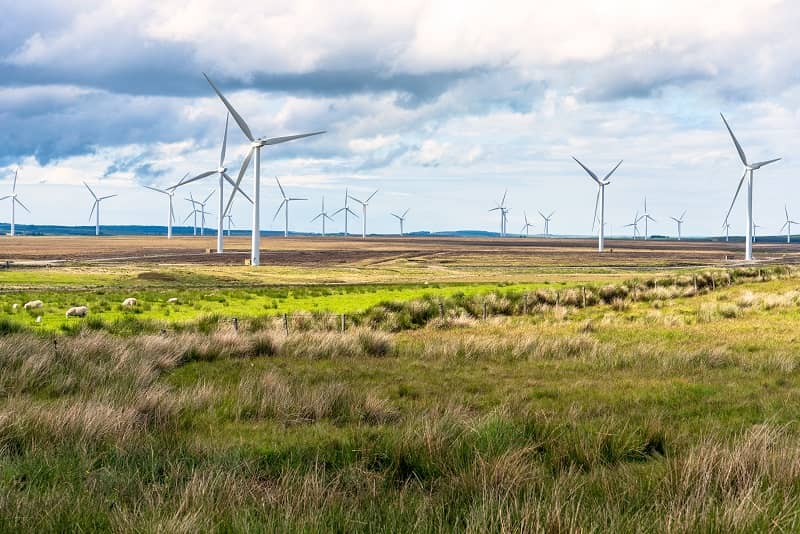February 27, 2023
Senate Committee on Environment and Energy
Oregon Legislature
Salem, Oregon
Dear Committee Members:
During January, several hearings of the committee were devoted to briefings on various energy subjects, with a primary focus on greenhouse gas reductions. The invited witnesses tended to support state policy goals while downplaying the risks associated with forced decarbonization.
An example was the discussion of the Biennial Energy Report. One PowerPoint slide from the ODOE presentation stated:
What will it take to achieve economywide deep decarbonization and 100% clean energy? We reviewed 20 technical studies from across the country (mostly the west).
Key Findings: Achieving these policies is possible!
There is little reason to think this is true. There are no successful pilot projects anywhere in the world that provide a blueprint for decarbonizing Oregon’s economy. If we look backward at Oregon’s recent track record rather than forward into the misty world of computer modeling, the evidence suggests that the “clean energy” goals adopted by the state legislature are neither possible nor affordable.
Consider the following issues:
Oregon’s reliance on fossil fuels for electricity is increasing, not decreasing
According to ODOE, coal and natural gas accounted for 45% of Oregon’s electricity generation in 2012. By 2020, fossil fuel use had increased to 48%. The largest increase was in natural gas, which grew from 12% to 21.5%.
Major fuel sources for generating electricity used in Oregon
2012-2020
| Year | Hydro | Coal | Natural gas | Wind | Nuclear |
| 2012 | 46.0% | 32.6% | 12.7% | 5.4% | 3.1% |
| 2013 | 41.2% | 35.1% | 14.2% | 5.6% | 3.2% |
| 2014 | 41.4% | 34.1% | 14.8% | 5.6% | 3.3% |
| 2015 | 39.1% | 33.5% | 16.6% | 6.6% | 3.0% |
| 2016 | 41.0% | 28.2% | 18.5% | 7.3% | 3.5% |
| 2017 | 44.8% | 26.1% | 19.3% | 5.0% | 3.0% |
| 2018 | 43.3% | 24.8% | 21.1% | 4.7% | 3.8% |
| 2019 | 37.2% | 27.5% | 24.8% | 4.9% | 3.5% |
| 2020 | 38.9% | 26.5% | 21.5% | 7.0% | 3.5% |
| % change | -15.4% | -18.6% | +76.7% | +30.0% | +12.5% |
This trend should not be surprising. Wind and solar generators are unreliable, so they have to be backed up by dispatchable resources at all times. In the Pacific Northwest, the regional hydropower system has played that role for many years, but the hydro system is oversubscribed. The only other option for maintaining grid reliability is natural gas.
Scholars at the National Bureau of Economic Research found a nearly 1:1 relationship between the rise of intermittent renewable sources and natural gas peaker plants, based on data from 26 countries over more than two decades. As wind and solar capacity grows, so too does the number of natural gas plants to ensure grid reliability.
The cost of RPS compliance has been rising substantially
Ever since SB 838 was first debated in 2007, advocates have been assuring the public that the cost of decarbonizing the grid will be trivial. But the slow ramp-up of the RPS law was deceiving. Costs jumped significantly in both 2015 and 2020 as the RPS ratchet tightened. This can be seen in the annual compliance reports of PGE, summarized below:
PGE Cost of Compliance for the Oregon RPS
| Year | Cost of Compliance | Revenue requirement | Cost premium to ratepayers |
| 2013 | $4,552,061 | $1,687,948,431 | 0.27% |
| 2014 | $4,191,304 | $1,725,966,728 | 0.24% |
| 2015 | $39,782,405 | $1,751,907,849 | 2.20% |
| 2016 | $33,733,221 | $1,755,079,545 | 1.90% |
| 2017 | $33,207,867 | $1,751,981,218 | 1.90% |
| 2018 | $47,138,245 | $1,813,197,333 | 2.60% |
| 2019 | $44,328,947 | $1,831,380,634 | 2.40% |
| 2020 | $55,148,967 | $1,831,380,634 | 3.0% |
| 2021 | $64,616,131 | $1,915,345,917 | 3.4% |
| 2022 (est) | $64,962,005 | TBD | TBD |
| 2023 (est) | $55,060,228 | TBD | TBD |
| 2024 (est) | $53,957,639 | TBD | TBD |
| 2025 | $74,730,312 | TBD | TBD |
| 2026 | $56,373,737 | TBD | TBD |
| 2027 | $58,343,972 | TBD | TBD |
The cost of compliance since 2013 for PGE has been $326.7 million. The total of known and estimated costs through 2027 is $690.1 million. This should be setting off alarm bells for legislative leaders. The RPS is a pure tax on ratepayers. They pay more, but receive nothing in return because RECs don’t exist in the physical world. If they were regulated by the SEC they would be considered securities fraud.
Worse yet, force-feeding more and more wind and solar into the system each year via legislative mandate reduces grid reliability, which is the one thing consumers really value.
Oregon is facing a serious shortage of dispatchable electricity
According to the most recent forecasts produced by the Pacific Northwest Utilities Conference Committee (PNUCC), there will be growing shortages of reliable electricity in the region for the rest of this decade. On an annual basis, the Northwest is likely to face a 19 average MW deficit in 2023, growing to 3,790 MW by 2032.
More than 2,100 MW of coal generation has been shut down in the Northwest since 2019, and another 2,800 MW will be terminated by 2026. This is another trend that is not sustainable.
We should learn from recent California experience. Multiple natural gas plants in California that were scheduled to be shut down in 2020 have been extended to 2023 or beyond. Those shutdowns were negotiated more than a decade ago, so the state had ample time to prepare. But after the rolling blackouts of 2020, California politicians lost their appetite for fossil fuel plant closures.
During July and August of this year, Gov. Gavin Newsom also persuaded state legislators to extend the life of the two nuclear reactors at Diablo Canyon, which were scheduled to be permanently shut down in 2024 and 2025, respectively. Diablo is the last nuclear power facility in California, and the political decision to shut it down was made in 2018; but in August of 2020, hundreds of thousands of California residents faced rolling blackouts. Shutting down a major source of carbon-free electricity no longer seemed wise.
The consulting firm Energy and Environmental Economics (E3) conducted a study on resource adequacy in the Northwest and estimated the cost of our region investing in various clean energy scenarios by the year 2050. E3 found that nearly half of all renewable energy in the 100% GHG reduction scenario will have to be curtailed due to overbuilding solar and wind resources. Curtailment is reducing or restricting energy delivery from a generator to the electrical grid. This often happens in California in the middle of the day when there is more solar available than there is demand.
The 60% reduction scenario has low curtailment, the 80% reduction scenario has 4% curtailment, and the 100% reduction scenario will result in curtailing 47% of renewable resources, as shown below.
Annual Generation Mix Across Scenarios in 2050

Source: Energy and Environmental Economics, March 2019
The impact of a 100% reduction scenario is also costly as it requires nearly double the quantity of renewable resources and a large amount of storage compared to the 98% reduction scenario. According to E3:
An additional upfront investment of $100 billion to $170 billion is required, relative to the 98% GHG Reduction scenario. Compared to the Reference Scenario, the Zero Carbon Scenario requires an additional annual cost of $16 to $28 billion ($52 to $89/MWh), i.e., the average retail rates nearly double across the region.

Source: Energy and Environmental Economics, March 2019
A time for legislative reconsideration
In its 2021 report to the legislature regarding implementation of SB 1547, the OPUC speculated that various factors over the next ten years “should” result in significantly reduced GHG emissions by PGE and PacificCorp. According to the Commission, the key factors were:
- The December 2020 retirement of PGE’s Boardman coal plant
- The current trend of continual reductions in the prices for wind, solar, and various types of storage technologies
- SB 1547’s gradually increasing RPS requirements, which begin in 2025
- SB 1547’s elimination of coal from electricity supply, beginning in 2030
- The significant GHG emission reduction targets of HB 2021, beginning in 2030
- New innovations in clean, dispatchable generation technology such as generators capable of using 100% green hydrogen and small, modular, nuclear reactors.
If this is the playbook for decarbonizing the economy – more than 15 years after the first RPS law was passed – Oregon is in trouble. A simple rebuttal to the PUC report is:
- The closure of Boardman subtracted reliable baseload power from the grid, which hasn’t been replaced.
- Energy storage is not a source of power.
- RPS and CES requirements are aspirational goals, not enforceable standards.
- “New innovations” in clean, dispatchable generation technology means we’re counting on something that doesn’t yet exist.
Long before 2035, the Oregon regulatory vision will implode due to high costs and chronic electricity rationing. Waiting for the crisis means you won’t be able to solve it. I encourage you to make grid reliability your top priority this session, while you still have time.
Sincerely,
John A. Charles, Jr.
President













Jason Cole
Thank you John. Hopefully your factual words of wisdom will wake up the whackadoodles in Salem. They are playing with people’s lives and livelihoods. Thanks, Jason